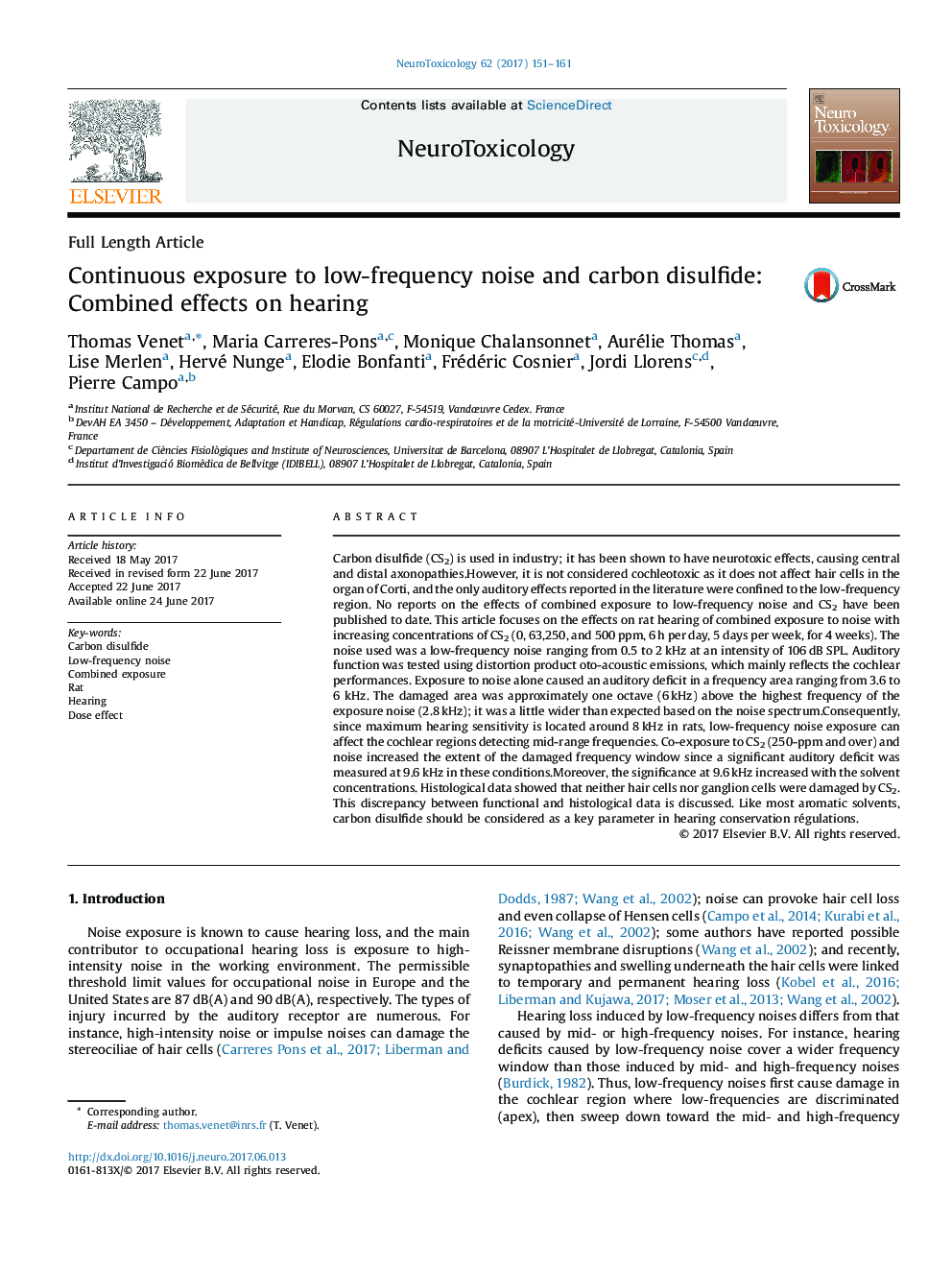| کد مقاله | کد نشریه | سال انتشار | مقاله انگلیسی | نسخه تمام متن |
|---|---|---|---|---|
| 5560798 | 1562032 | 2017 | 11 صفحه PDF | دانلود رایگان |
- Carbon disulfide temporarily potentiates the effects of low-frequency noise on cochlear function.
- Low-frequency noise provokes hearing loss in a frequency range wider than expected.
- No evidence of cochlear toxicity due to carbon disulfide.
Carbon disulfide (CS2) is used in industry; it has been shown to have neurotoxic effects, causing central and distal axonopathies.However, it is not considered cochleotoxic as it does not affect hair cells in the organ of Corti, and the only auditory effects reported in the literature were confined to the low-frequency region. No reports on the effects of combined exposure to low-frequency noise and CS2 have been published to date. This article focuses on the effects on rat hearing of combined exposure to noise with increasing concentrations of CS2 (0, 63,250, and 500Â ppm, 6Â h per day, 5 days per week, for 4 weeks). The noise used was a low-frequency noise ranging from 0.5 to 2Â kHz at an intensity of 106Â dB SPL. Auditory function was tested using distortion product oto-acoustic emissions, which mainly reflects the cochlear performances. Exposure to noise alone caused an auditory deficit in a frequency area ranging from 3.6 to 6 kHz. The damaged area was approximately one octave (6Â kHz) above the highest frequency of the exposure noise (2.8Â kHz); it was a little wider than expected based on the noise spectrum.Consequently, since maximum hearing sensitivity is located around 8Â kHz in rats, low-frequency noise exposure can affect the cochlear regions detecting mid-range frequencies. Co-exposure to CS2 (250-ppm and over) and noise increased the extent of the damaged frequency window since a significant auditory deficit was measured at 9.6Â kHz in these conditions.Moreover, the significance at 9.6Â kHz increased with the solvent concentrations. Histological data showed that neither hair cells nor ganglion cells were damaged by CS2. This discrepancy between functional and histological data is discussed. Like most aromatic solvents, carbon disulfide should be considered as a key parameter in hearing conservation régulations.
Journal: NeuroToxicology - Volume 62, September 2017, Pages 151-161
